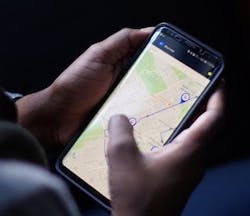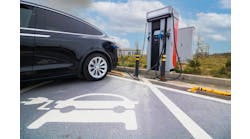Small transit systems face many challenges to innovation including—perhaps notably—small budgets and limited staffing levels. But small systems can often use innovative approaches to technology on a small scale to improve the customer experience and optimize the provider’s efficiencies.
In State College, Pennsylvania, which is the home of Pennsylvania State University, the Centre Area Transportation Authority, a 76-bus system better known as CATA, has been implementing small technology projects since its first technology plan in 2005. CATA is the third largest transit system by ridership in the state, and it has its own unique ridership challenges. As with most college towns, population in State College, which is just over 102,000 when classes are in session, drops by 30% when classes are out. Nonetheless, this university town setting gives CATA opportunities to work with students and university staff on various research initiatives, and some of CATA’s most used tools are to partner with startups using pilot and demonstration projects.
Laying the groundwork
In the early years CATA may have been considered on the bleeding edge, as it partnered with a technology startup called Avail, located in State College. In 2005, CATA developed its first technology plan that set a path for how Avail would serve as CATA’s technology integrator, assisting the then-50 bus system to introduce the latest technology for its customers, which largely consisted of university students, faculty, and staff. The 10-year plan enabled CATA to build a system block by block with a path to research and apply for funding opportunities. At the end of the 10-year plan, some projects were implemented ahead of schedule, some behind, and others had become obsolete. Additional phases were added as new technologies became available.
CATA installed GPS on all its buses and a web module in 2006, in what was then considered a management tool for a small staff struggling to cover a nearly 24/7 operation. Within little more than a year, it became apparent that the technology had become more of a customer service tool—giving passengers bus location information in the palm of their hands.
CATA has now implemented several technologies including automated passenger counters, real-time bus arrival signs at key locations, and mobile phone-based rider alert technology. Still on the plan but not yet implemented are engine diagnostics and accident avoidance technology. Some technology on the master plan became obsolete before implementation, such as interactive voice response (IVR), which became unnecessary due to the information that is now sent directly to passengers’ smartphones. CATA’s customer service center now averages only 250 calls a week, and most of those calls relate to purchasing passes or lost-and-found articles, not route information. This is an enormous time savings for a staff that had already been reconciling time allotment issues.
In addition, CATA has also experienced a continued reduction in the number of printed ride guides needed each year and believes this type of printed information may be eliminated over the next couple years.
While serving as a guinea pig for new products in order to get them at a lower cost can be very positive, working with a startup or live testing products can also have its drawbacks. At the time of the technology master plan, CATA had no real expertise, so staff learned as they went along, which can be painful for both staff and the customer. In addition, CATA quickly learned that it needed to have an internal dedicated staff person for the project, something CATA did not have the funding to support. The startup also was often learning as it went along. Strong bench testing of updates is crucial; as any transit manager can attest no two transit systems operate alike, and transit in a university town can be specialized based on the community and campus layout.
Another tool CATA has used is the pilot project. This approach was used to test traffic signal priority in 2010 with some success, solar technology at various shelter locations, and more recently a mobile fare collection system.
It’s easier for the kids
Most student housing in State College was privatized more than a decade ago. To serve a need to efficiently move Penn State’s 46,000 main campus students to and from campus on a small-town road system, CATA has contracts with the more than 23 student housing complexes. The contracts are per-ride based, giving the complex residents unlimited rides on the routes that travel between the complex and the university. Nearly $2 million of CATA’s $20 million budget is funded by these contracts. The program ridership is captured by magnetic strip cards. Because only 3% of CATA passengers ride using cash, the cost/benefit analysis of updating current fareboxes was not reached. As CATA’s technology plan tracked new technology, staff determined that they would not pursue smart card fare systems but smartphone technology instead.
In 2017, CATA began work with Token Transit for a demonstration of smartphone technology for fare collection. Token Transit is a small company made up of former Google and Apple employees who are strong transit supporters. The small staff makes this company very agile and able to adjust as CATA has found areas of need.
The demonstration project consisted of a new day pass, something CATA had wanted to try but did not have the technology necessary to implement. What was important to CATA in this demonstration project was that there was no capital cost for the application; instead, Token Transit charged a 10% transaction fee. The demonstration kicked off last football season with sales of just under 1,900 passes that first month, followed by continued growth in sales.
Because of the apartment complex pass program, it is crucial that CATA is able to collect boarding and alighting data and per-pass usage in order to consider expansion of the program beyond the present availability of a day pass. CATA recently extended the demonstration project with the addition of a validator that reduces the level of fare interaction between the customer and the bus operator, as well as a beacon system that will capture where the pass holder gets on and off the bus.
CATA will pay an annual fee for the validator and beacons, much like leasing the equipment. Future plans may include a fare capping option so that when the customer’s day pass purchases reach the cost of a monthly pass, it will automatically convert the customer, and they will not need to buy more day passes until the month of rides has ended. Other future needs are the ability of the app to be user-friendly for Penn State’s many international students who require language conversion assistance and serving those users who may not have access to a debit or credit card, which is currently required.
Another tool at CATA’s disposal has been to allow others to develop services and applications. CATA has an application through Avail Technologies, but also shares its data to allow individuals to develop applications CATA then tests. If the application is successful and meets the needs of the customer, CATA will endorse the application on its website. One of CATA’s first and most highly rated applications was developed and launched by two Penn State students, who have gone on to sell the application to other transit systems.
Maintaining the edge
CATA recently conducted a study of its routes serving low population density areas, and then this spring completed a microtransit simulation with TransLoc of Durham, North Carolina. As a result, CATA will move to a two-phased pilot in one of its communities later this calendar year through fall 2021 to see if microtransit can replace the current fixed route model.
CATA also gives the Pennsylvania DOT (PennDOT) high marks for its interest in advancing technology in public transportation. PennDOT contributed to many of the technology projects listed in this article. In addition, Pennsylvania, through lottery funds, supports public transportation for older adults, called shared ride. Seniors ride free on fixed route service and pay a reduced fare on curb-to-curb service that resembles ADA paratransit. Starting in 2011 and completed in 2015, PennDOT invested in a cloud-based scheduling and dispatching software called Ecolane for every shared-ride system in the state. This year, PennDOT launched a program to give every small and medium system in the state the same level of technology that CATA currently has, as well as additional modules to put performance data at the system’s desktop. A statewide fare technology is also under discussion.
These days CATA staff will often say they wish to be on the cutting edge rather than the bleeding edge of technology. Advancing technologically was a pillar of its 10-year strategic plan. However, under the plan there is a change in focus from customer-based technologies to internal processes that were still being done by pencil and paper. Software and systems to track fuel, lubricants, and work orders in the maintenance area were implemented last year, and next up will be a project to investigate automated scheduling and run cutting.



